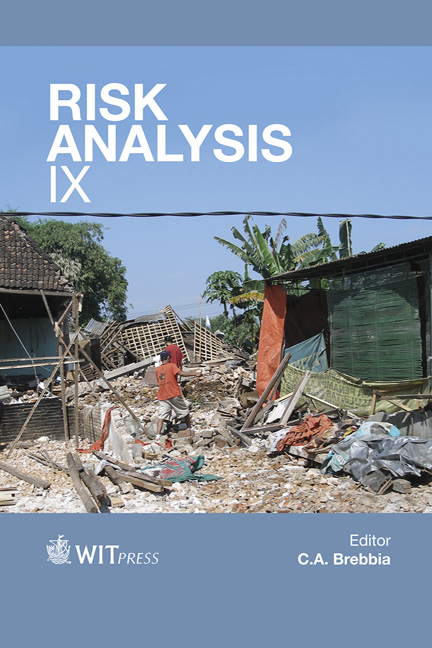Seismic Risk Assessment Of Three Types Of Exterior Beam-column Joints Using Fragility Curves
Price
Free (open access)
Volume
47
Pages
12
Page Range
85 - 96
Published
2014
Size
763 kb
Paper DOI
10.2495/RISK140081
Copyright
WIT Press
Author(s)
N. H. Hamid & S. A. Anuar
Abstract
The seismic risk assessments for one-third scales of three different types of reinforced concrete (RC) beam-column joints using fragility curves under Performance Based Earthquake Engineering (PBEE) are investigated. Three types of RC beam-column joints, as those with bracing (Type 1), overlapping of reinforcement (Type 2) and anchorage of longitudinal bars (Type 3), were tested and analyzed. The seismic performances of these joints were observed during experimental work and we classify the damage states according to the drift limit. Visual observation on crack propagations such as widths, diagonal cracks, crack patterns, spalling and crushing of the concrete on the joints together with buckling of longitudinal reinforced bar were examined. A fragility curve is used to evaluate the seismic risk assessment of these beam-column joints using a graph for colour coding system and damage limit states. Beam-column joint Type 3 has the least damage with 80% Confident Interval (CI) to survive under DBE (Design Basic Earthquake) and 55% CI under Maximum Considered Earthquake (MCE) followed by Type 1 and Type 2. Keywords: beam-column joint, fragility curves, HAZUS, seismic risk assessment, colour coding, damage-states, Design Basic Earthquake, Maximum Considered Earthquake.
Keywords
beam-column joint, fragility curves, HAZUS, seismic risk assessment, colour coding, damage-states, Design Basic Earthquake, Maximum Considered Earthquake.





